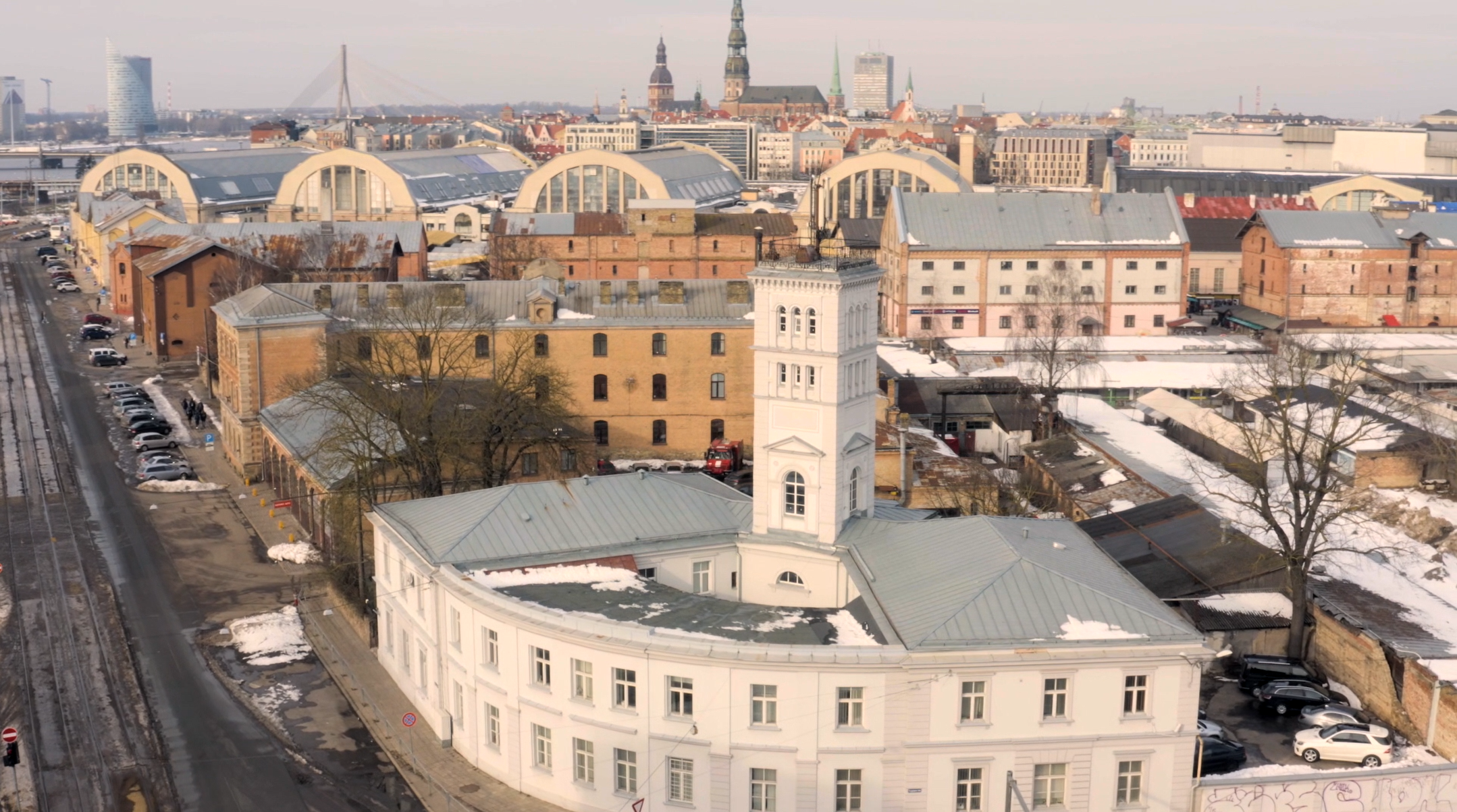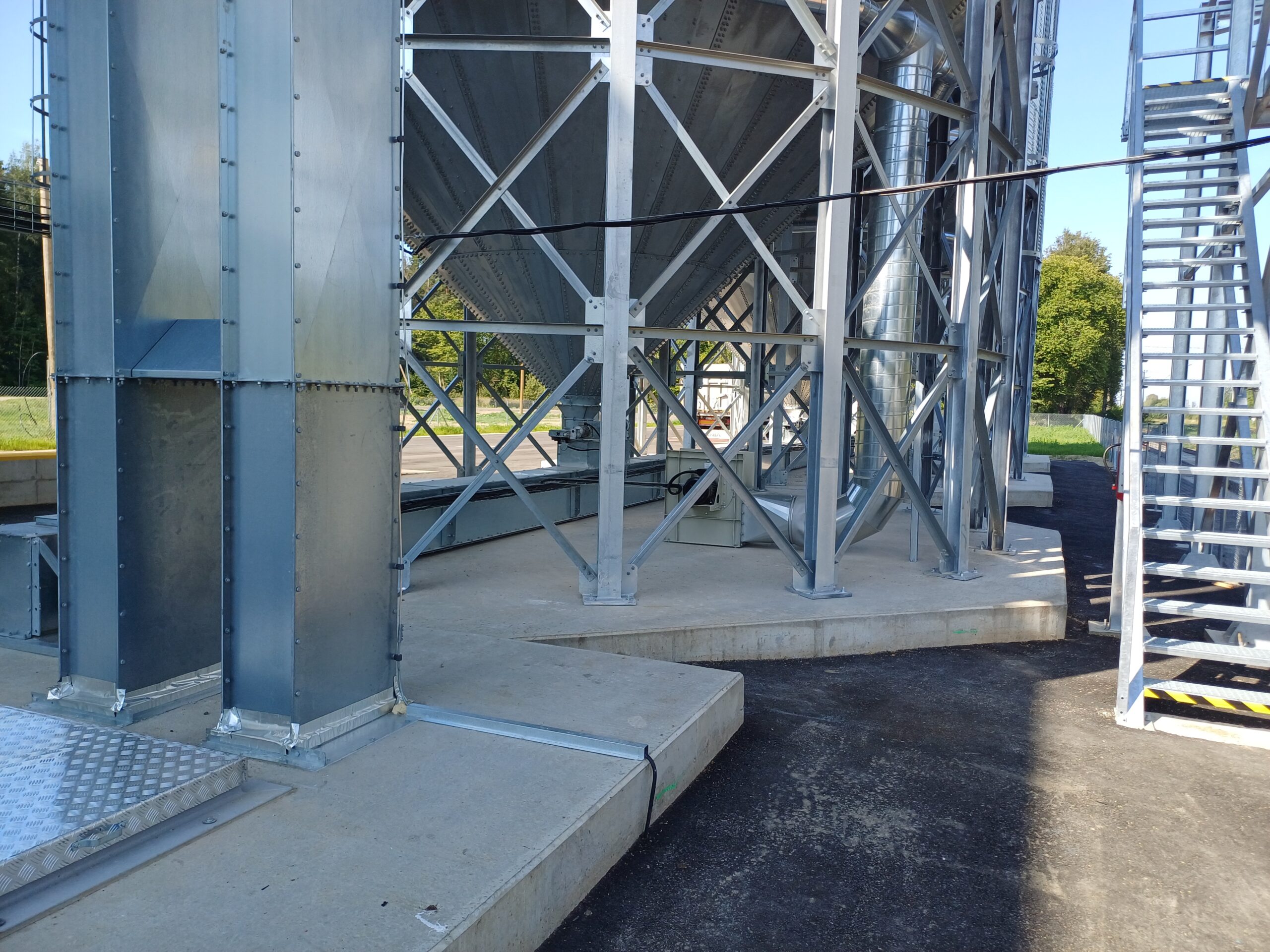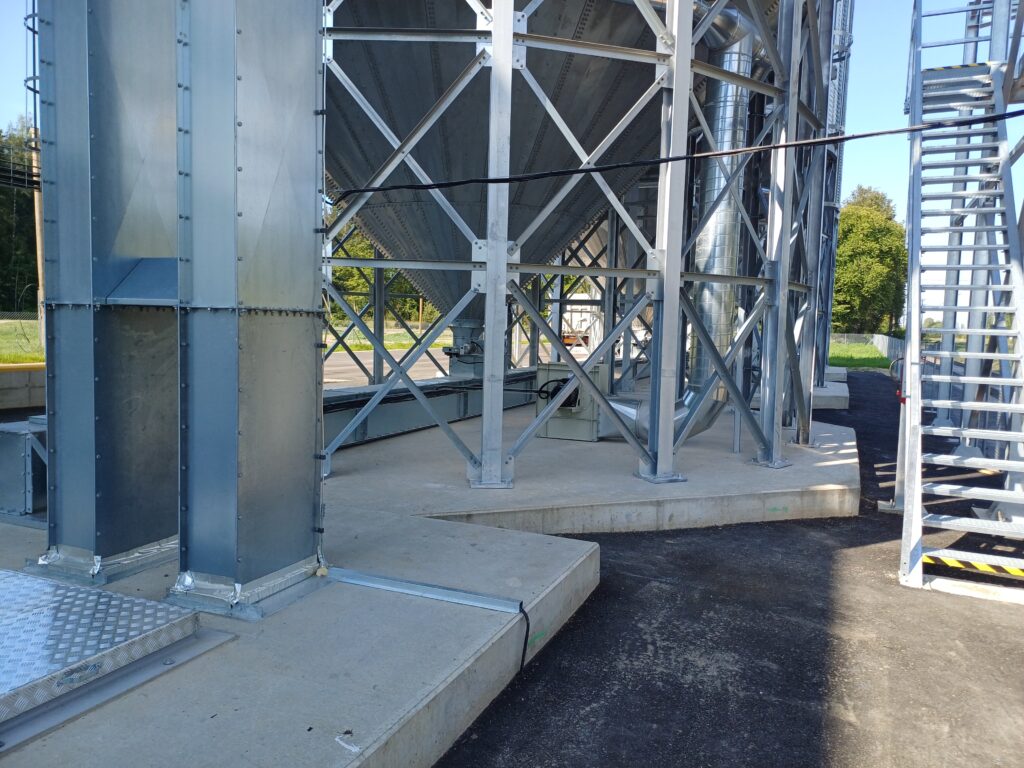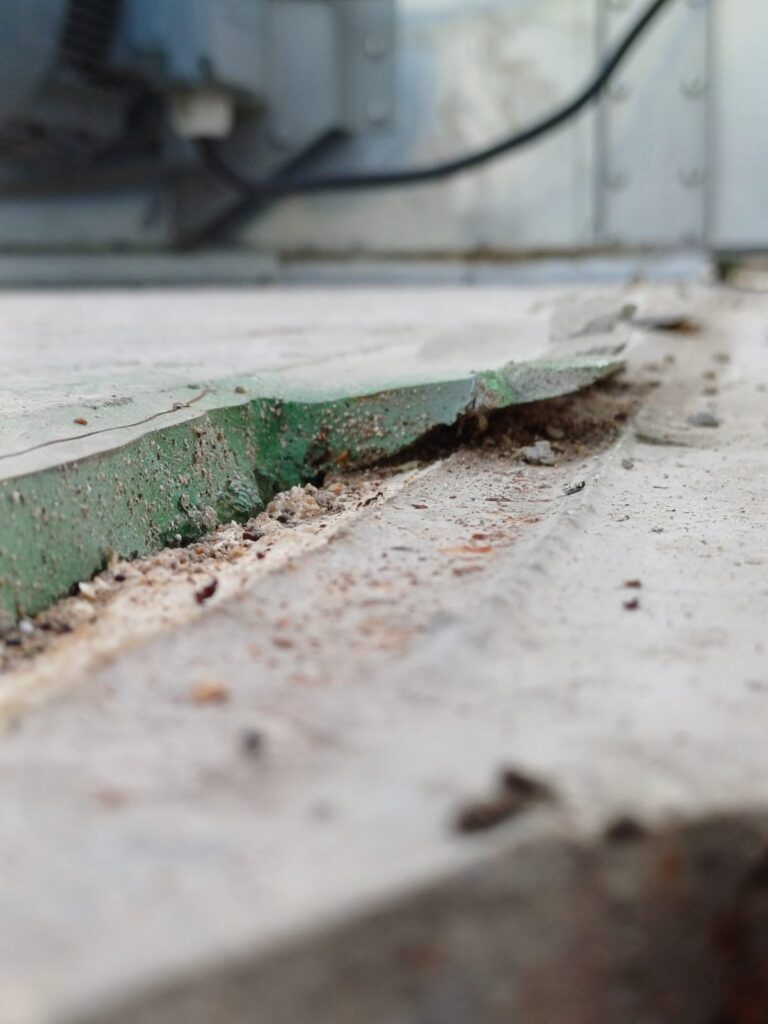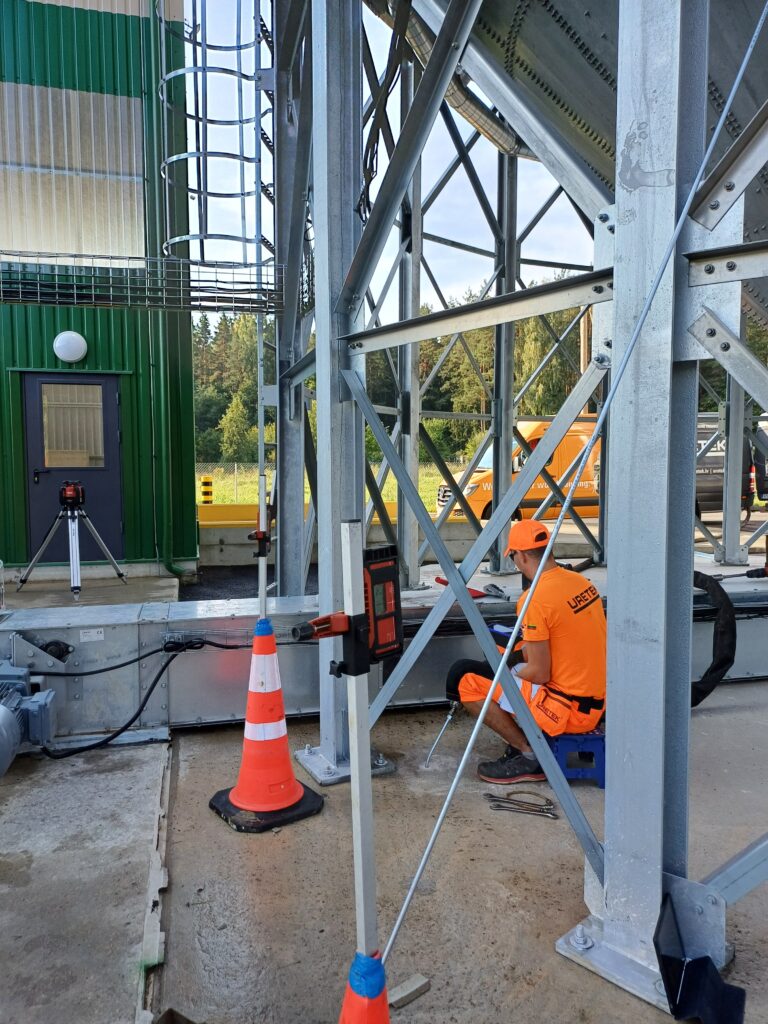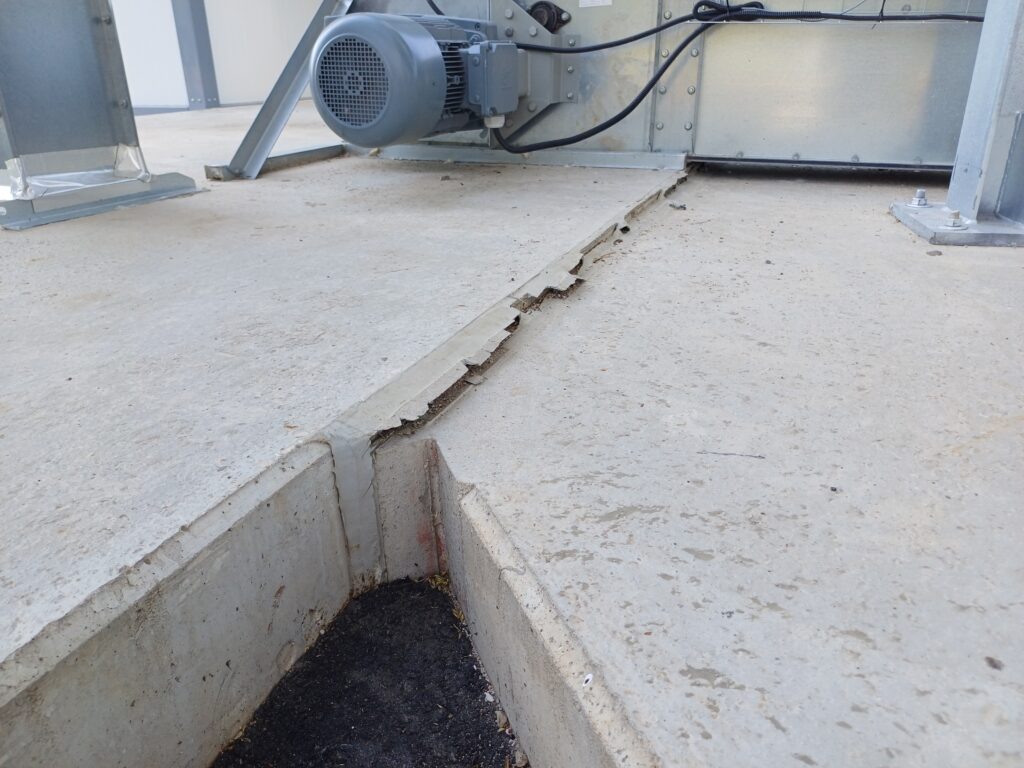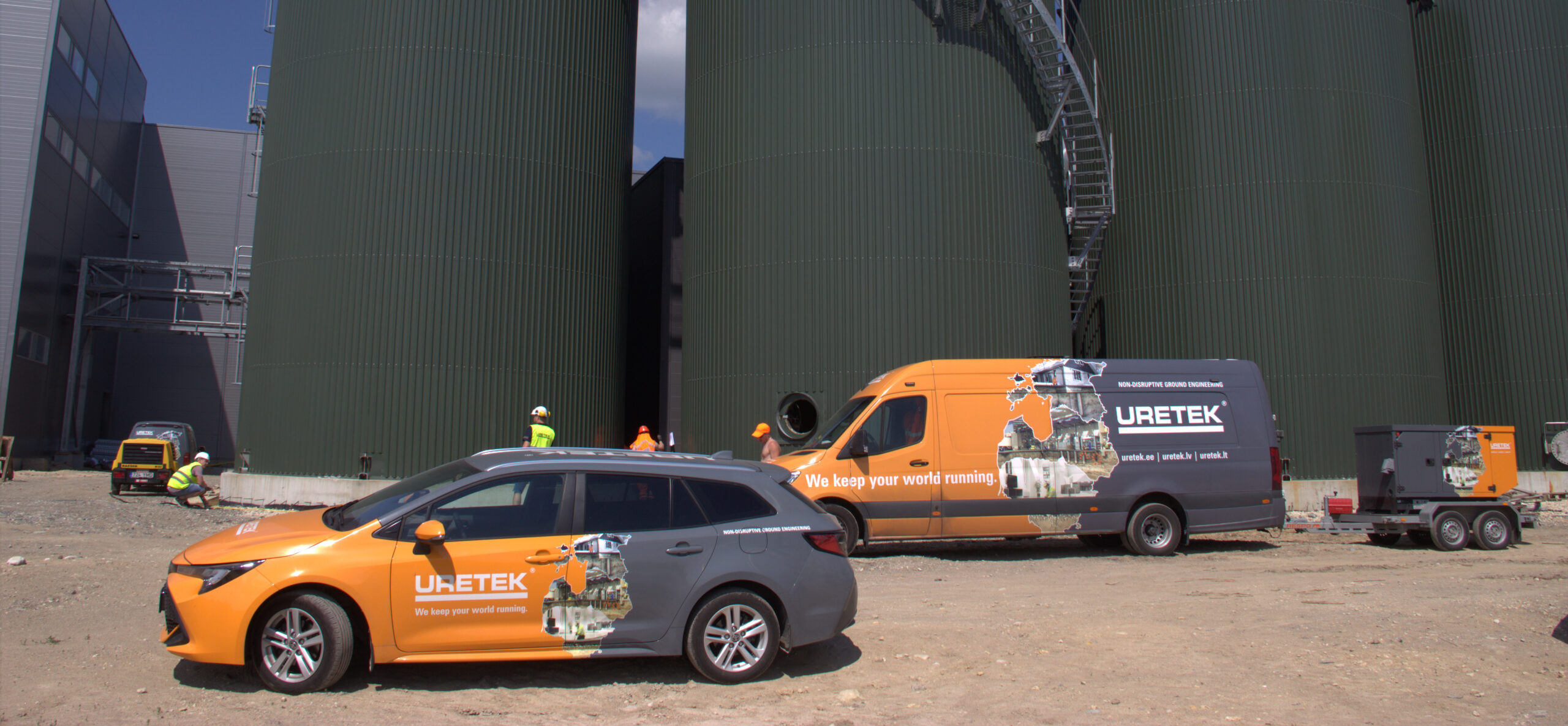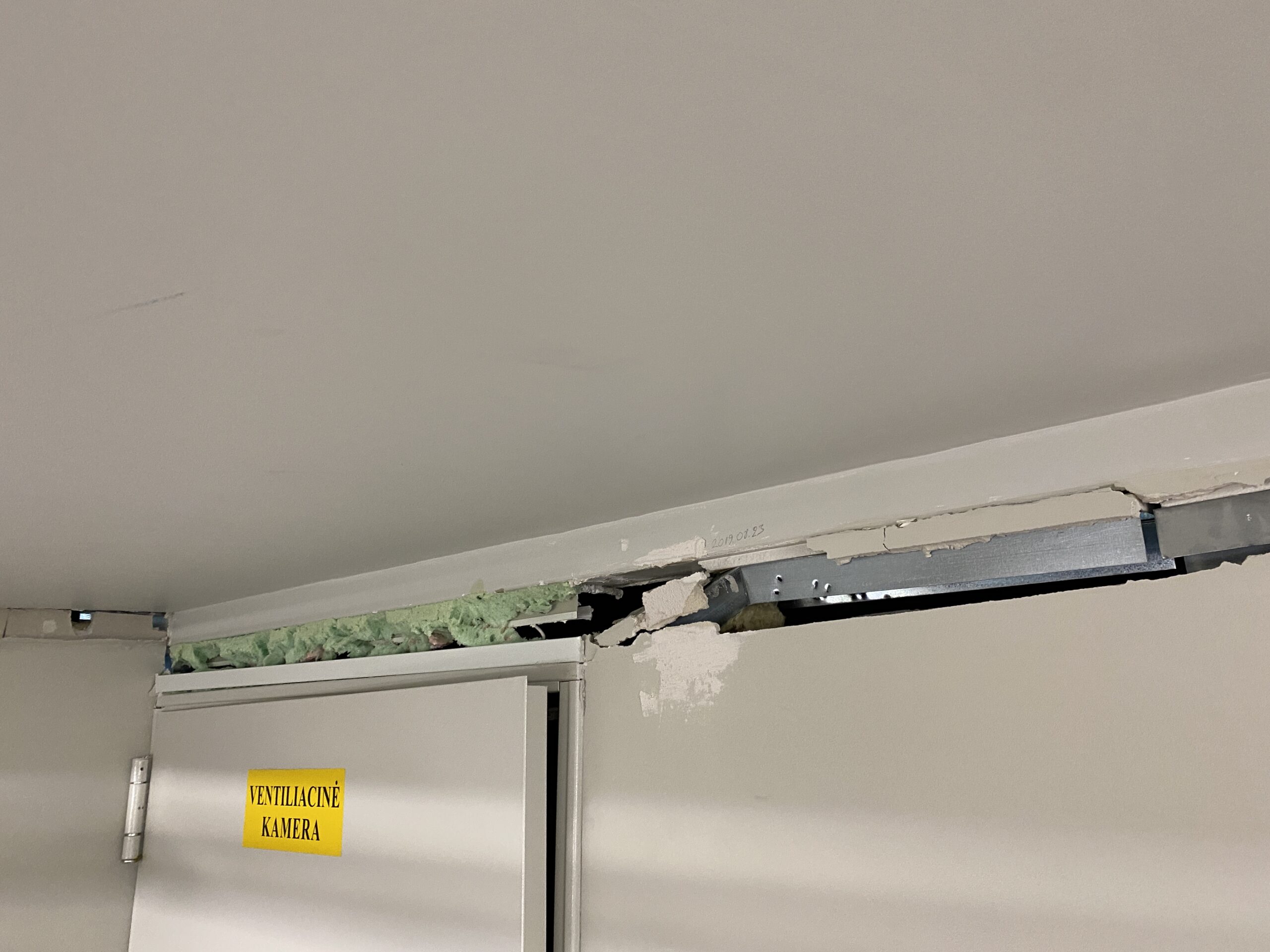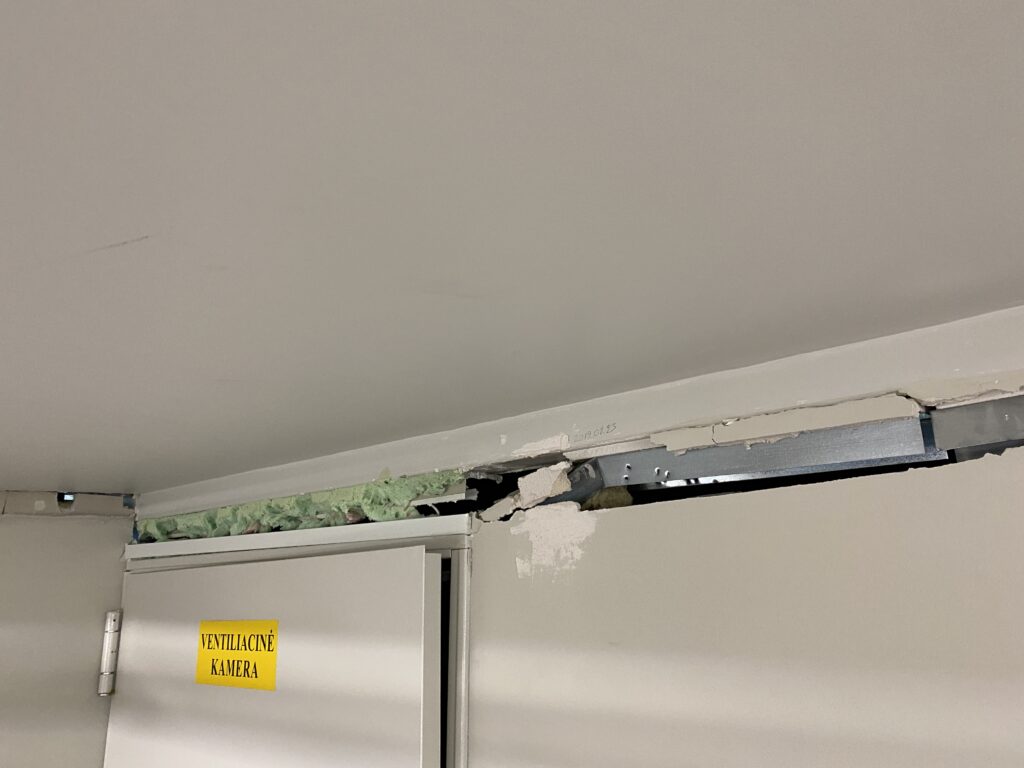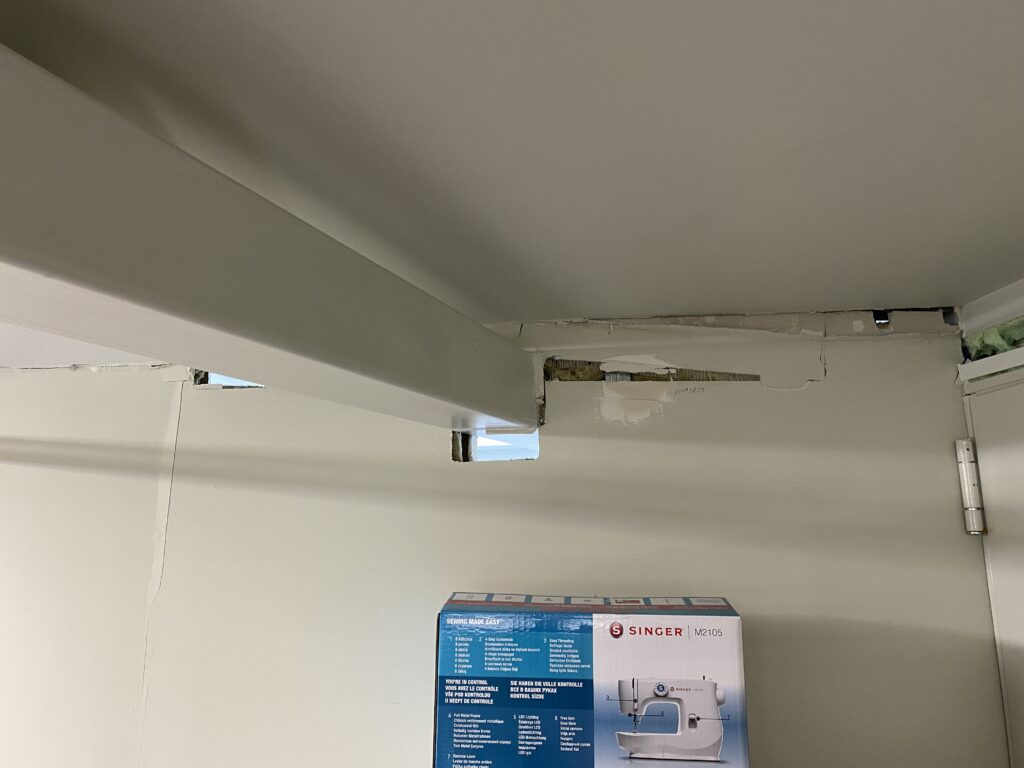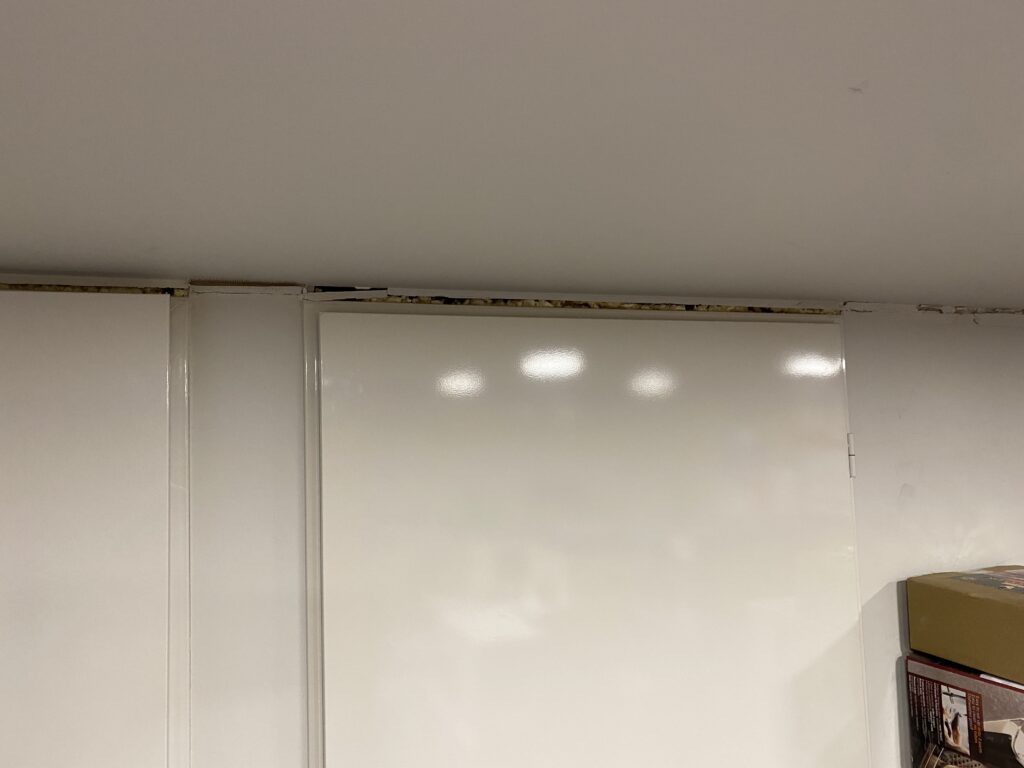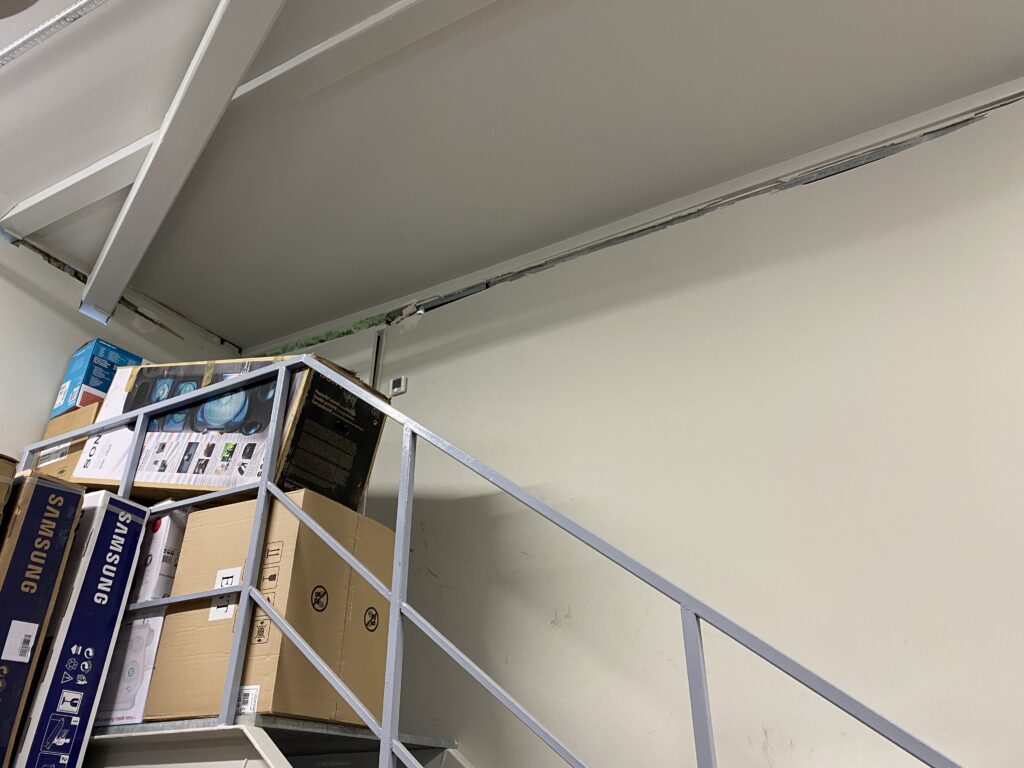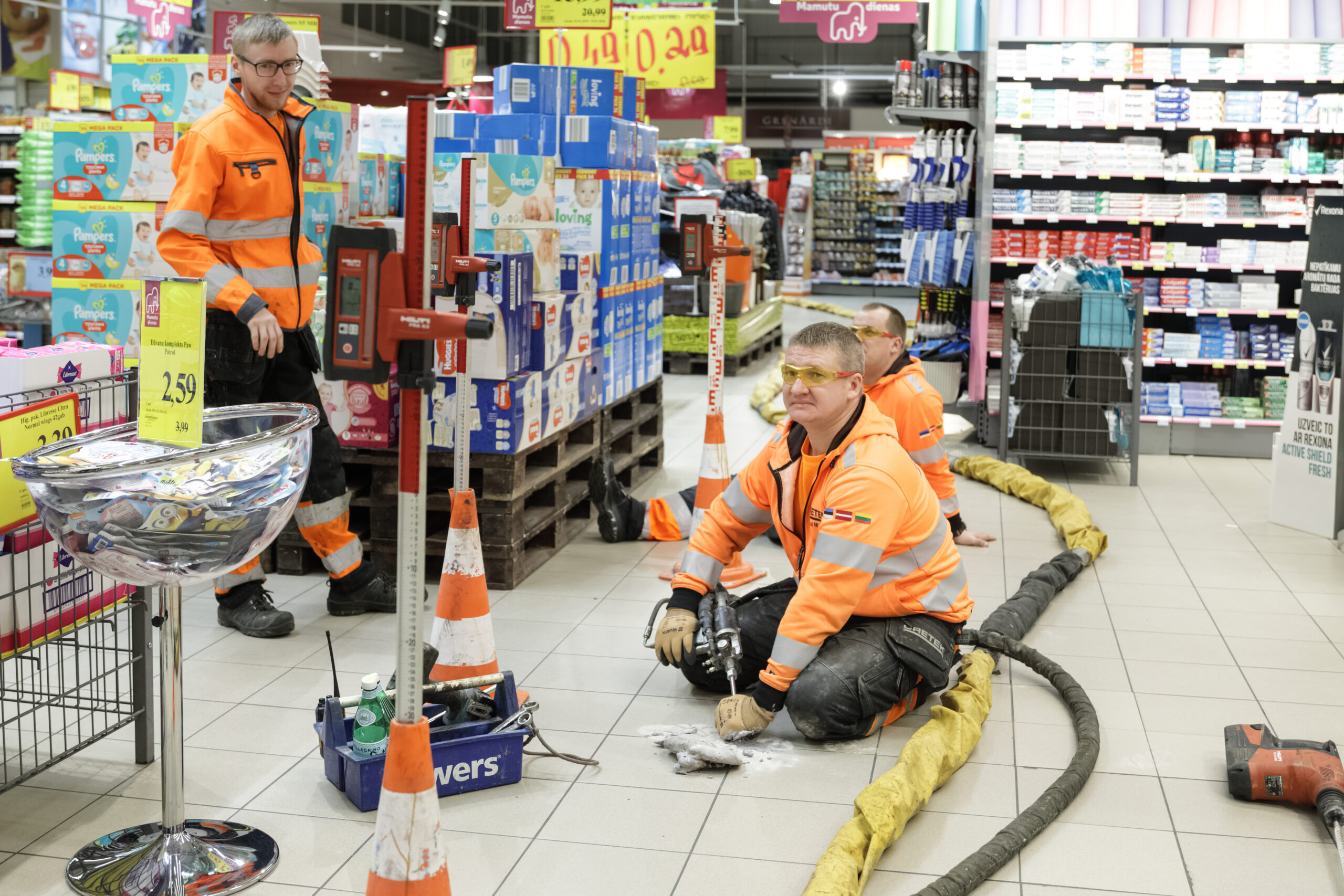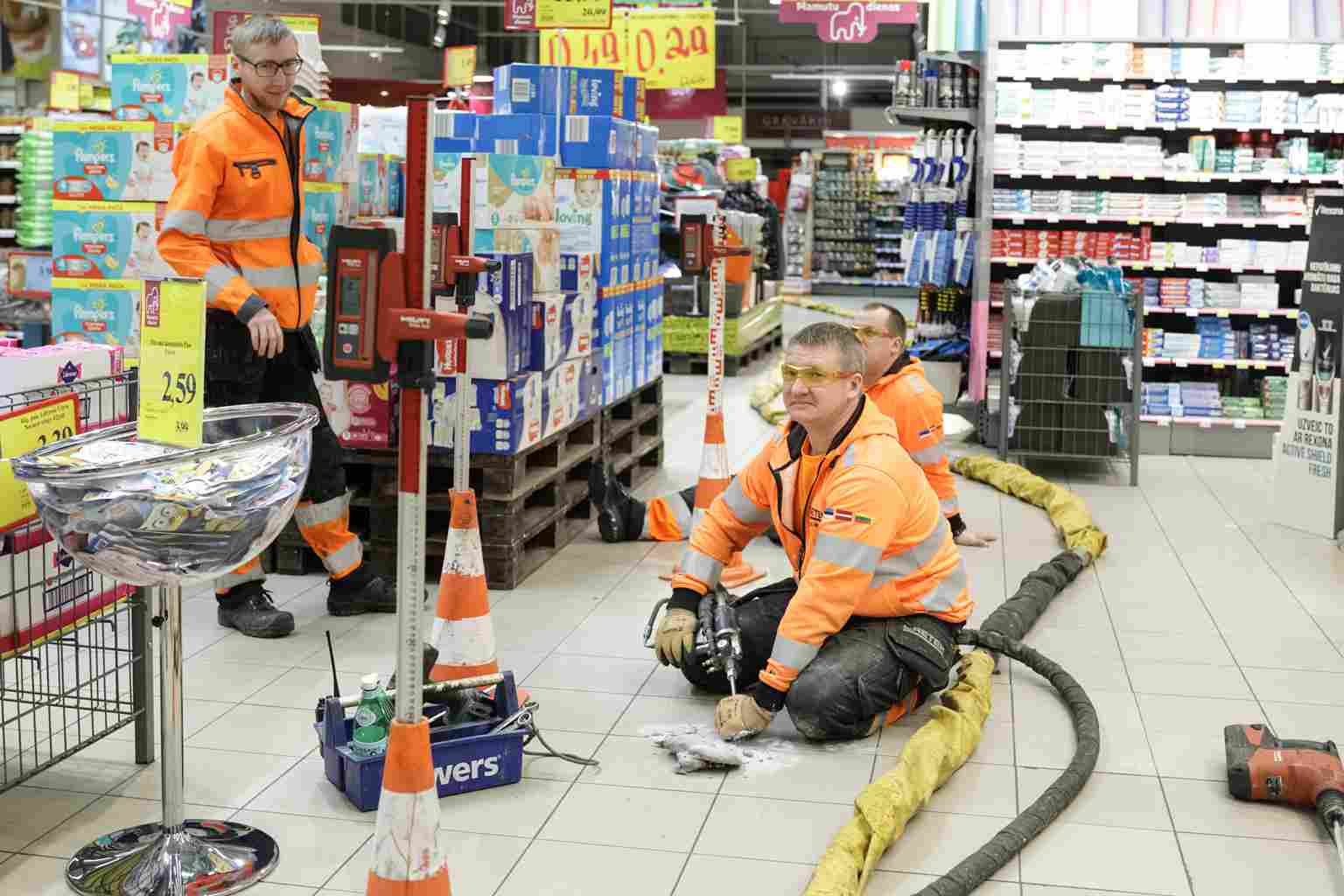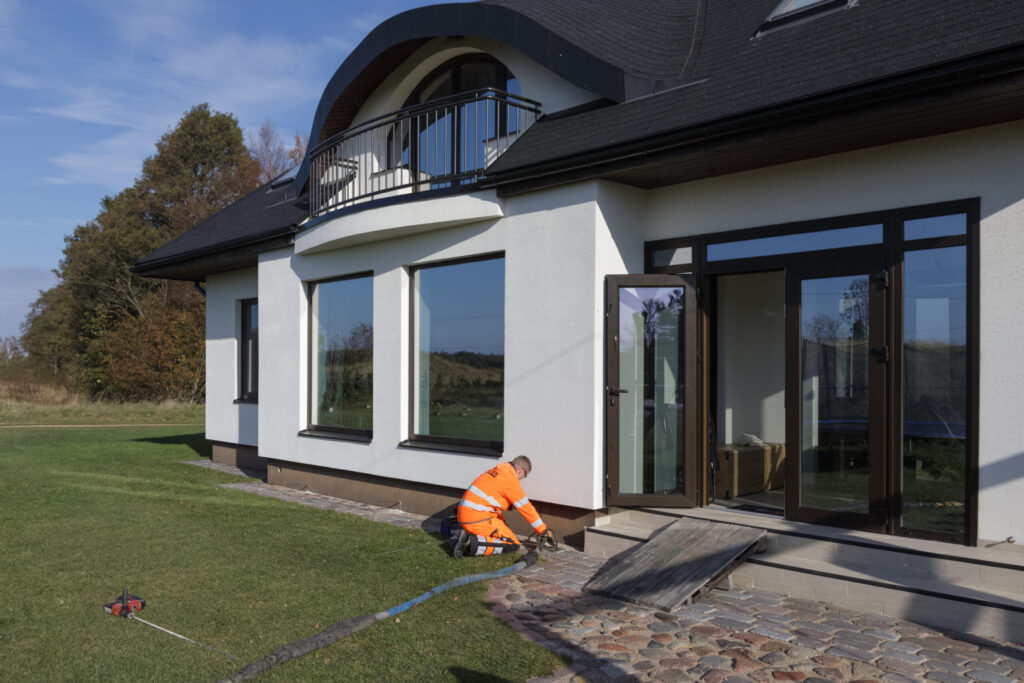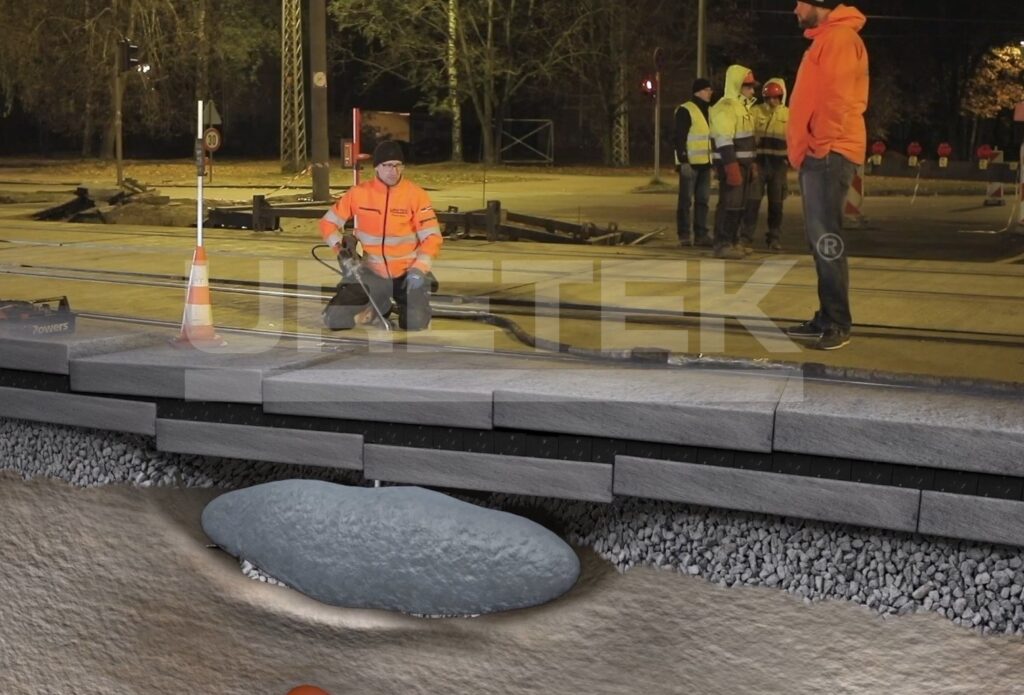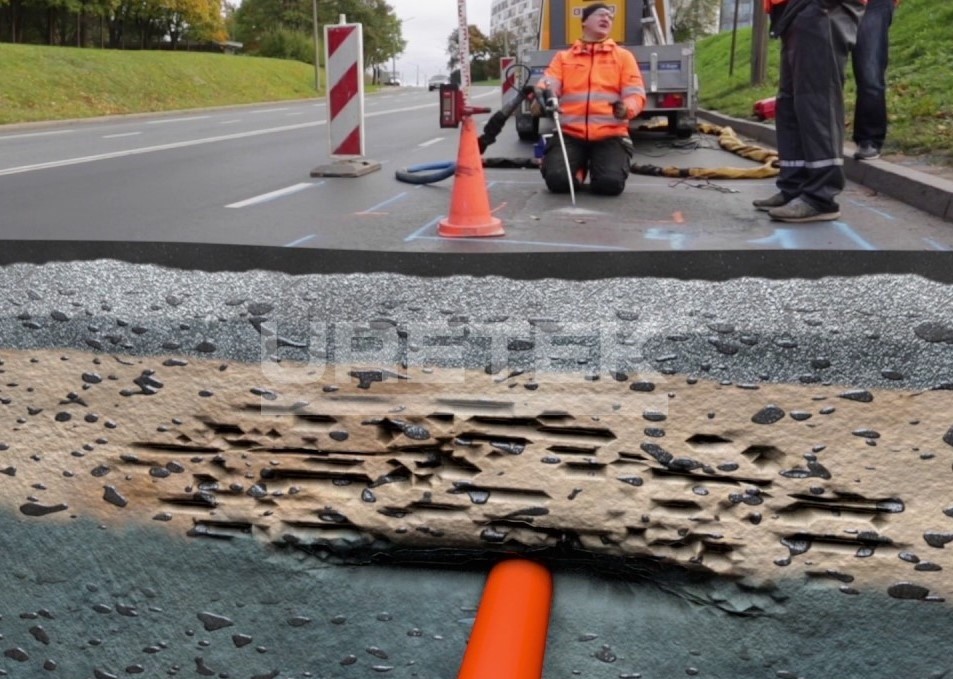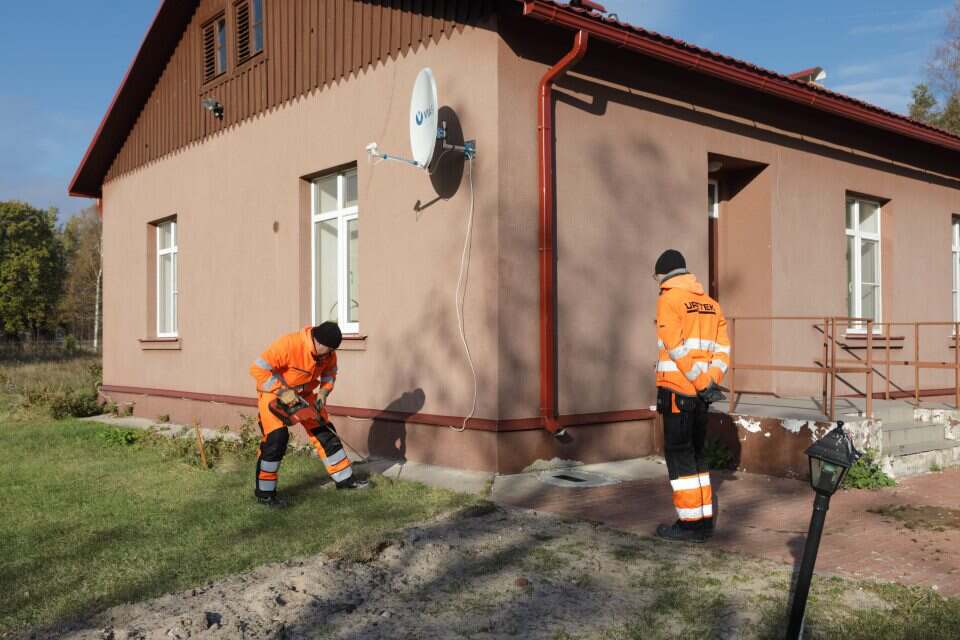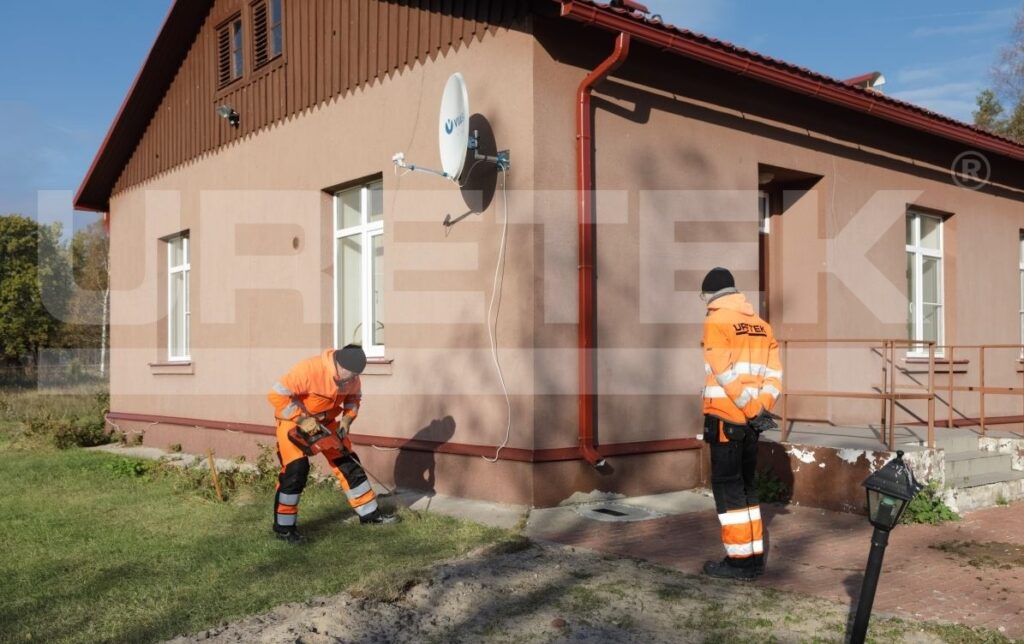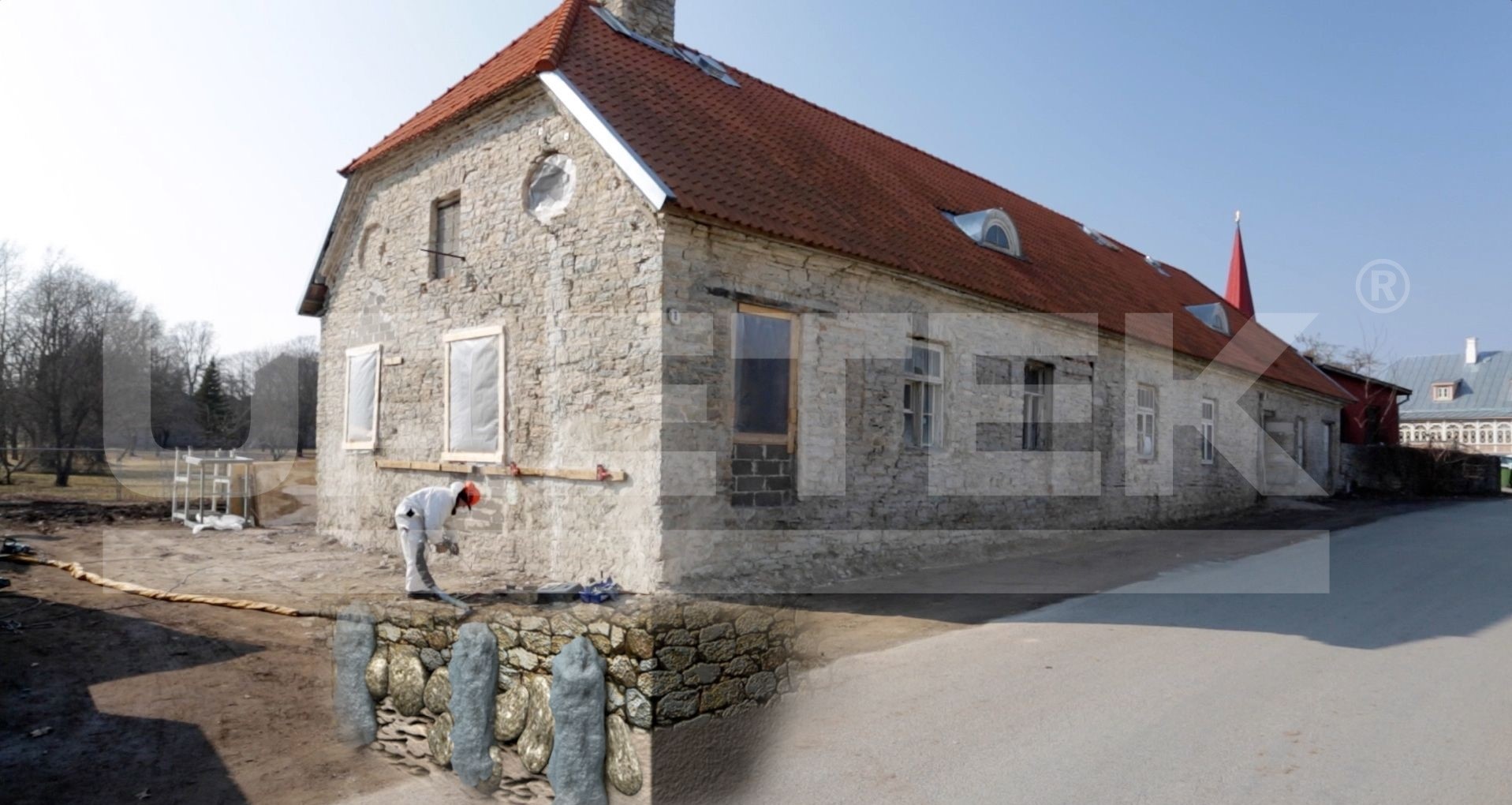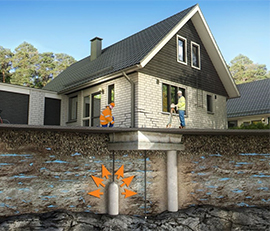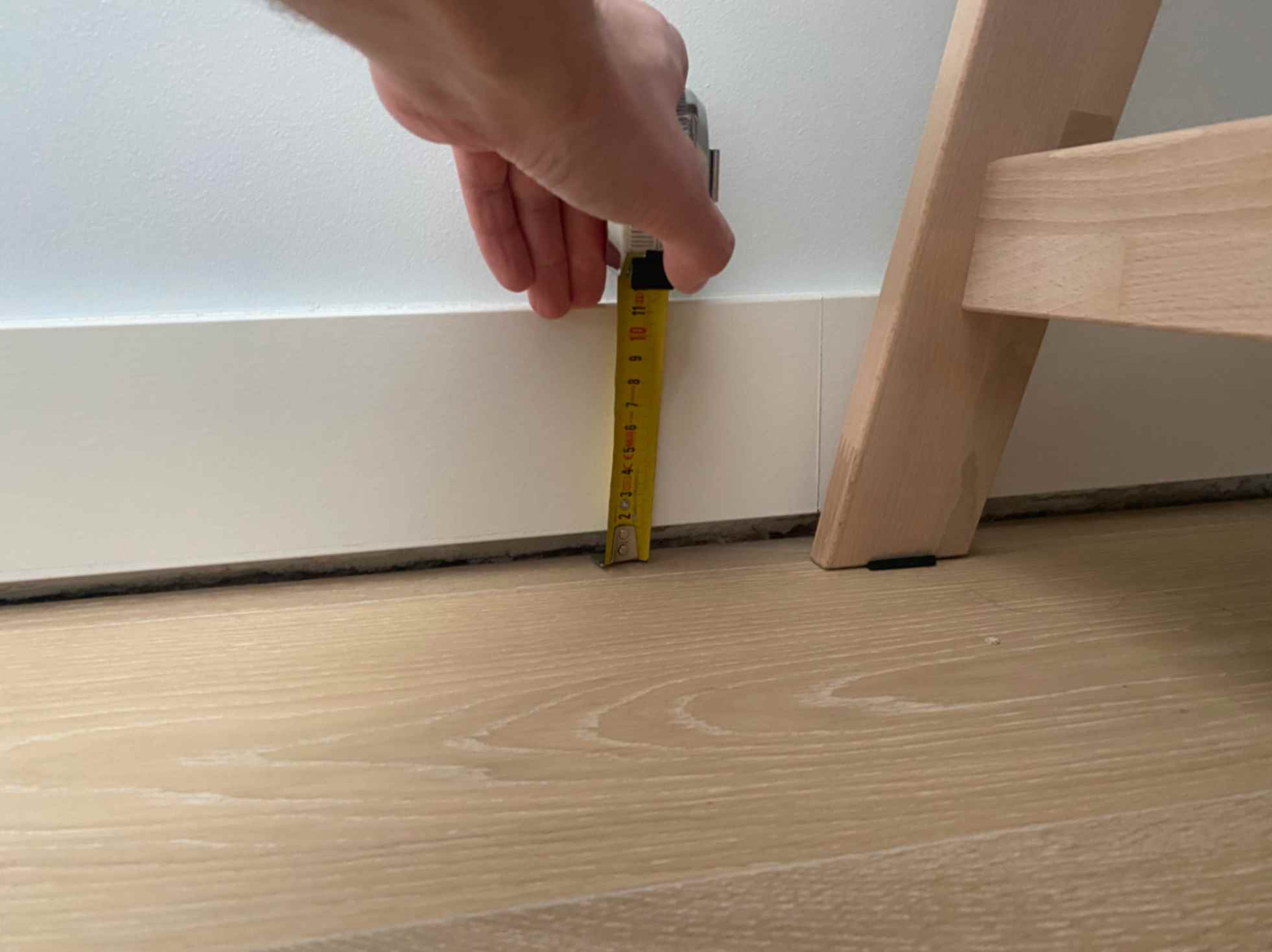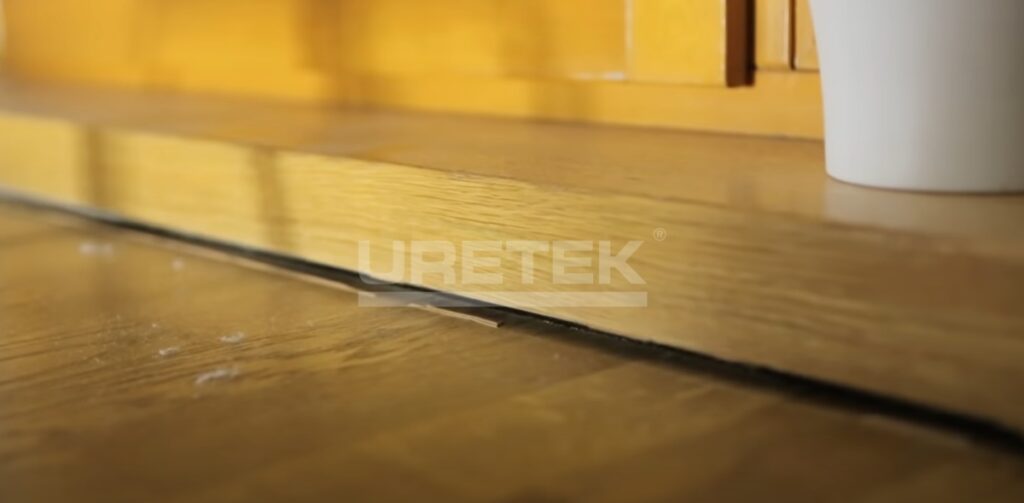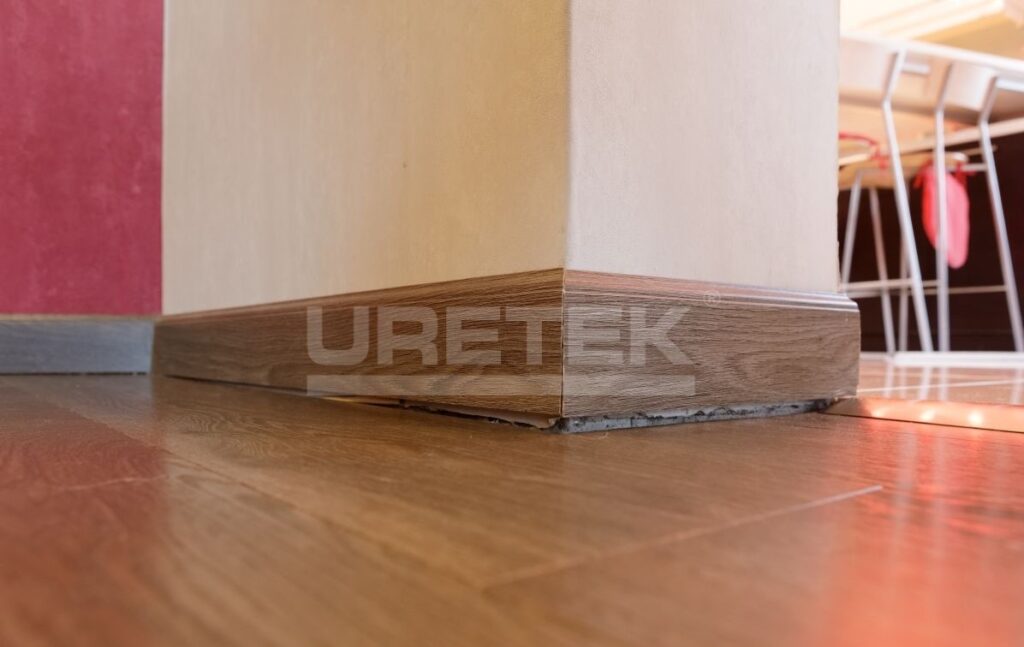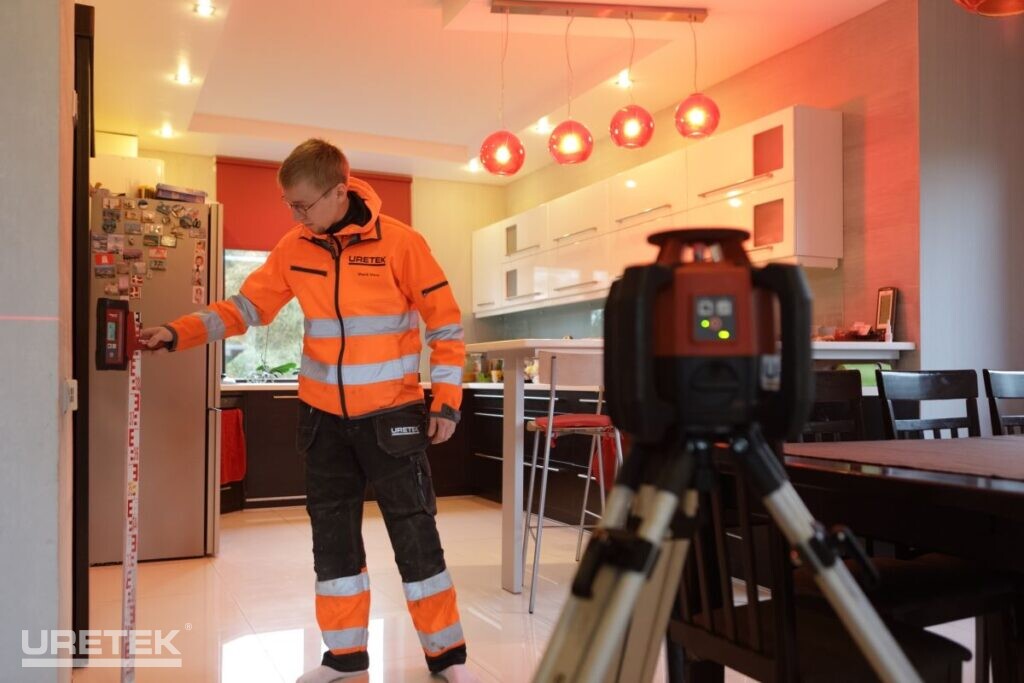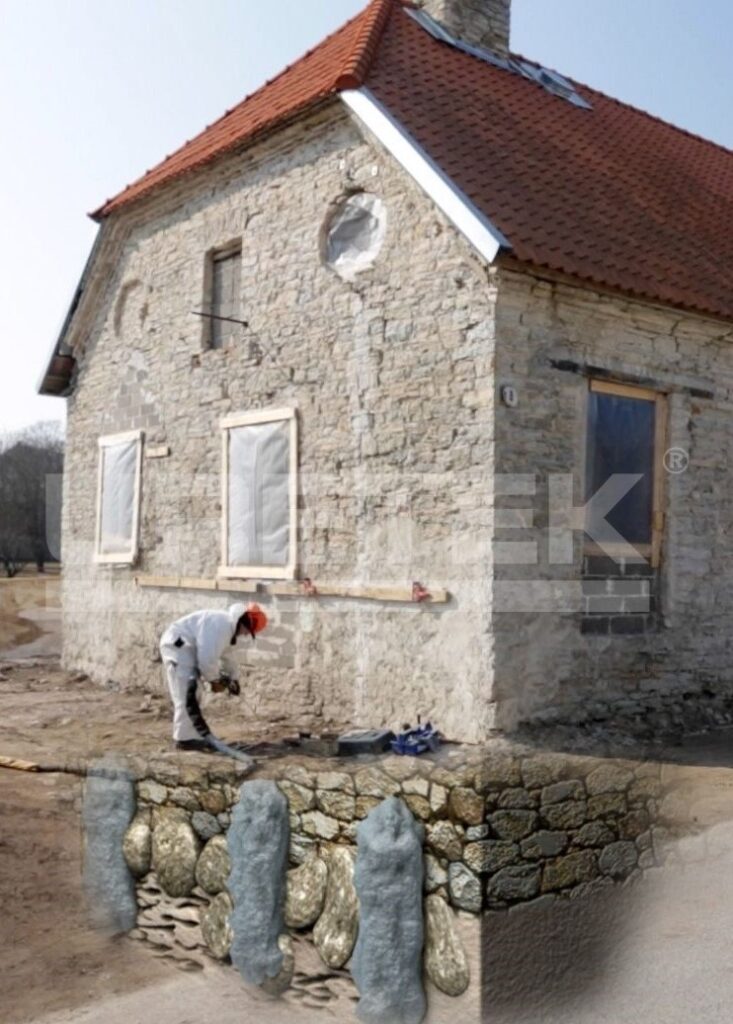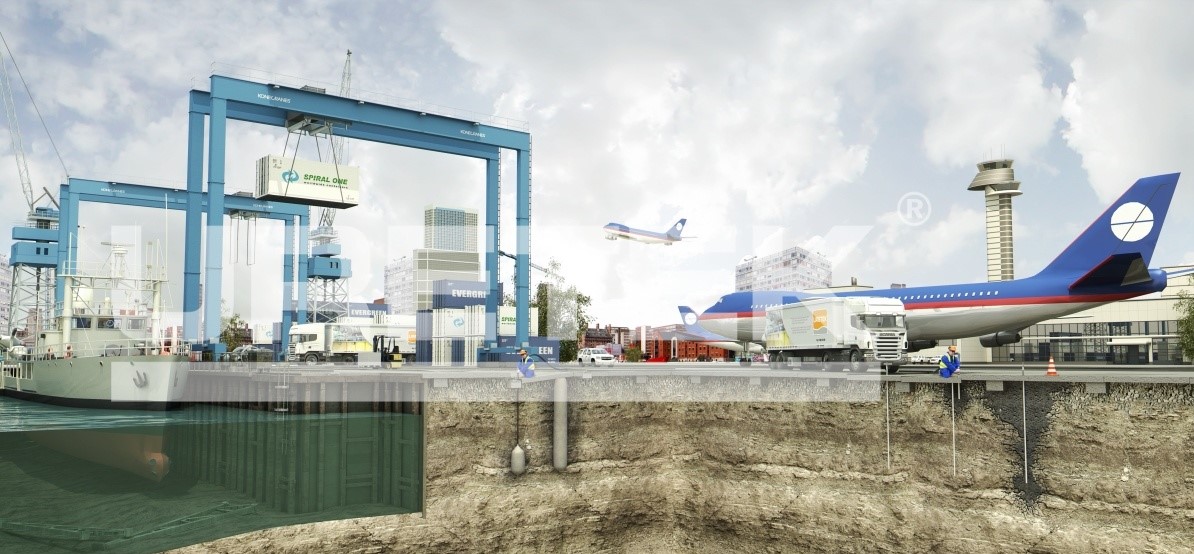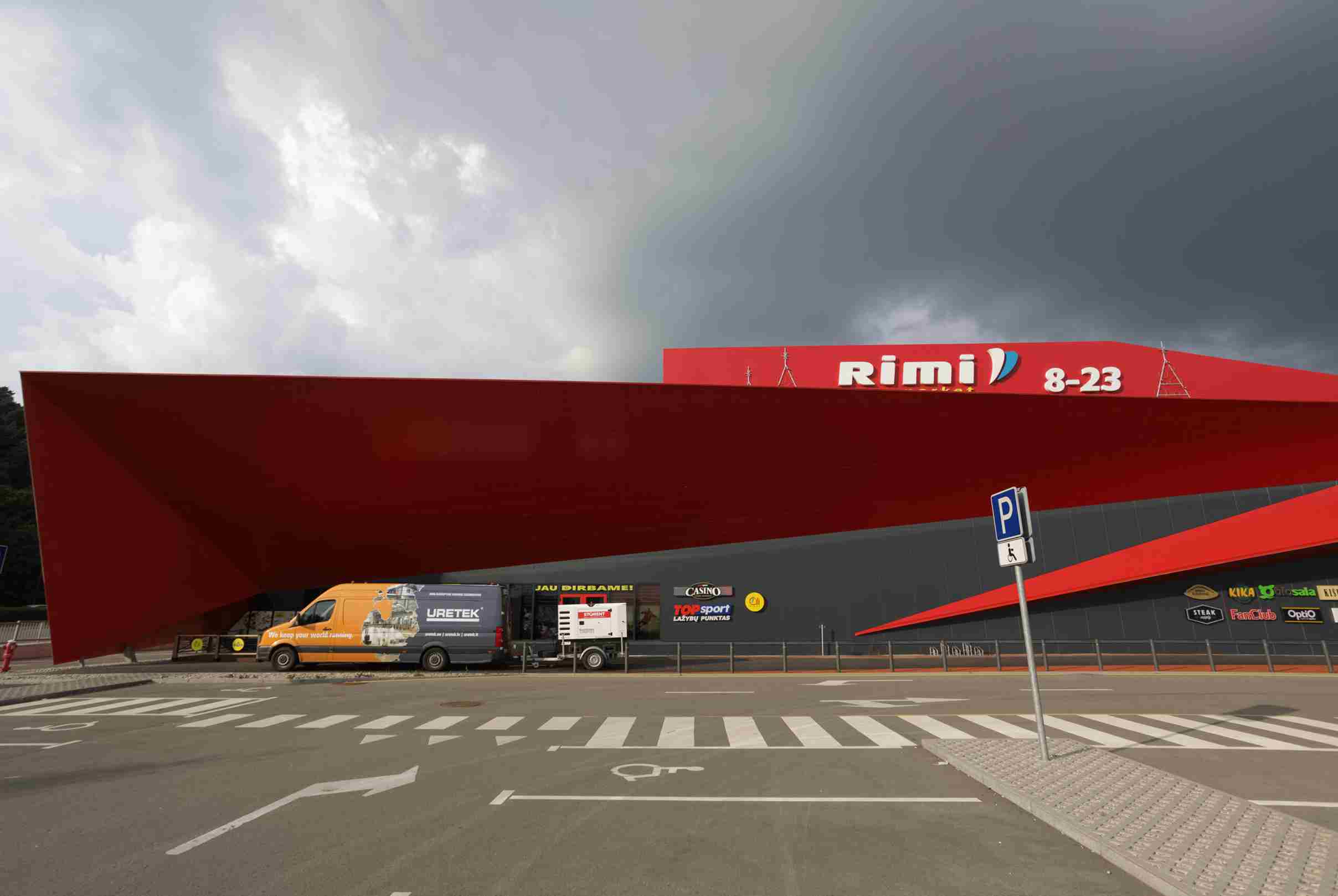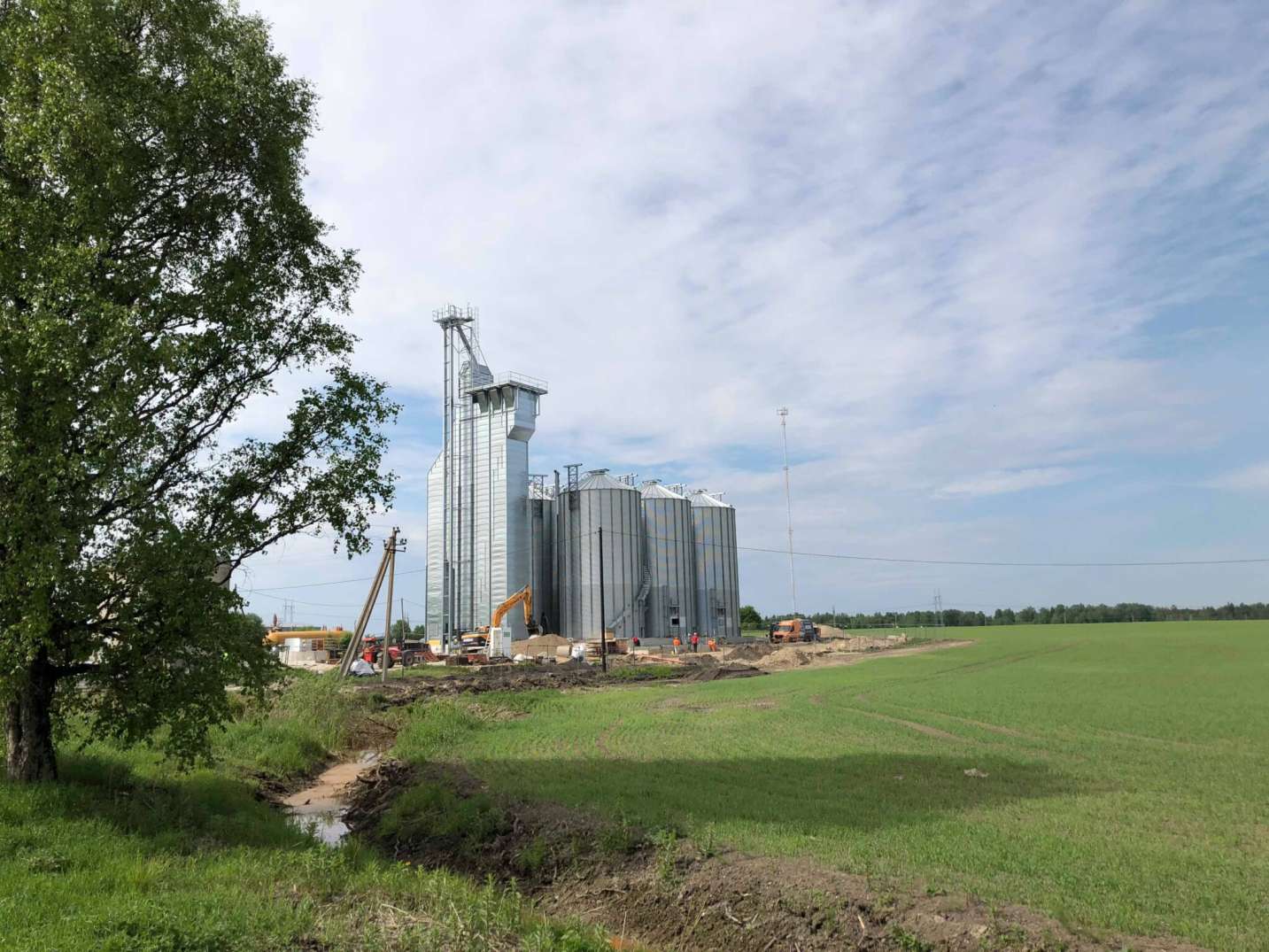Geopolymers
Ground improvement and structural re-levelling of a 900-ton grain storage tower
Keywords
Heavyweight grain containers stabilization and soil bearing capacity strengthening
Keywords
Electronic shop soil subsidence and compaction
Keywords
Stabilisation and re-levelling of the concrete floor of the Rimi shopping center
Keywords
Soil compaction and leveling – an important step to prevent the building from subsiding
The foundation is one of the most important, if not the most, part of a building. The entire building relies on the foundation, and its durability determines the durability of the entire thing. The foundation of the building has to be built so that it withstands the weight and load of other elements. A building’s and its foundation’s construction starts with preliminary work, which can not be ignored.
Preparing the soil by its compaction and leveling, is an important part of the construction process. This gives it the required flat base that offers an important support not only for the building, but for roads and other different building constructions as well. The compression process gives the soil, that is under the foundation, a bigger endurance and stability. It is important to know why this process requires careful attention and what could happen, if this step is skipped or carelessly executed. And most importantly- how to deal with consequences that have occurred from poorly compacted and leveled soils.
What is soil compaction?
The majority of constructions are supported by soil that is underneath them. To enable construction of a building or other facility, air and water particles must be removed from the soil and then it has to be leveled. That way the treated soil can sufficiently and firmly support the construction.
Soil compaction means increasing the density of soil, sand or some other solid soil layer by pushing out water or air from it. This is done by applying load to soil with the help of mechanical means. This way the soil’s volumetric weight and carrying capacity increases, which ensure the load receptivity coming from the building.
The compression’s main goal is to increase the shear strength and the related load capacity. Through the process however, the stiffness of the soil is also increased to prevent future deformations, for example through moisture content and frost.
The result from the compressions depend on many different factors such as:
- The nature and type of the soil – it can mean compositions from sand, clay, soil or granular;
- The thickness of the compacted soil layer;
- The moisture of the soil;
- Time, that is spent on compaction;
- Of the work that is done for compaction- the weight, type, vibration, number of repetitions etc of the used device
What is soil leveling?
Soil leveling, as the name itself says, means leveling the ground, to remove bumps, dimples or other bigger unevenness. The operation is carried out in the preparation phase of the new construction project.
One of the main purposes of soil leveling is to protect the foundation from water damages. Leveling the soil under constructions or around it, ensures water from flowing away from the building and not into the soil layer under the foundation. If the soil layer is not leveled or is poorly done, the water can flow towards the house. This can gather around the foundation and saturate the surrounding soil, causing the building to become unstable.
Afterwards, it is possible to carry out soil work around the house. For instance on properties, where the missing drainage ruins the foundation, leveling the soil can repair the situation.
Why is soil compaction important?
If proper geological studies were not done before building a house and the house is built on a weak land, or the land has been poorly prepared before building a foundation, as in compacted and leveled, it can lead to the process when the soil as well as the house start to subside.
A subsidence is a process that is a result of the environment, as a result of substandard works or due to changes in the soil, the building’s foundation could move downwards. Land subsidence can be caused by geological, manmade or seasonal reasons:
- High spring waters can wash away a lighter layer of soil, such as sand;
- Bigger trees that grow near the foundation can, especially during hotter periods, suck out moisture from the soil so much that it could cause the soil or other soil layer to contract;
- Water that has flown out from a broken or leaking sewage, can sometimes soften or even wash away the ground surface, resulting in a movement of the ground and therefore the building;
- If a building is near a high traffic area, the strong vibrations coming from it could lead to ground movement.
- Foundation works, that have been done with poor quality, could cause subsidence problems, especially during water damages.
Although, reasons why a house’s foundation or floors subside are different, they are still frequently caused from the very first building steps. For this reason, it is very important to be cautious about the soil’s compaction and leveling.
What does house subsidence entail?
Different cracks in the inner and outer walls, gaps between the floorboards and the walls, sloping or partially sunken floors, slanted or jammed windows and doors are just a few concerns that subsidence can bring up.
Over time subsiding foundation can bring up serious problems:
- Damages to walls and floors are harder to repair or they are even irreversible;
- Cracks that have become bigger and bigger over time allow wind and moisture to enter the house, causing mold over time;
- Heat loss increases, the dwelling is colder and as a result the energy efficiency of the building decreases;
- Water and heating pipes can break;
- Malfunctions of electrical installations can occur.
Problems that are caused from the house’s or foundation’s subsiding are expensive. A lot of money is frequently spent on repairing damages, but the core of the problem is not dealt with and no work is undertaken to stabilize the foundation.
How to deal with the consequences of poorly compacted soil?
If for any reason the foundation of the house has begun to subside and as a result the whole building has started to do the same, the problem must be dealt with as soon as possible. Then neither the soil leveler nor the surface hardener will help, you have to approach subsidence in a different way.
Stopping the house from subsidising and restoring the foundation using conventional methods is a time consuming and resource-intensive job. Solving the problem with the outdated approach means emptying the rooms, breaking up and removing the concrete floors, compacting the soil and pouring new floors. This puts the owner of the house in front of a difficult question- should they start a time- and money consuming process that forces them to be away from home for a long time, or postpone the solution of the problem into the indefinite future, knowing that the situation will constantly worsen? This way it seems like the only thing left is to make a bad or worse choice.
If only there was a solution that thickened and stabilized the building quickly and cleanly and would not need additional preparations such as moving out of the house and replacing furniture. What if the cracked walls and cracks between walls and floor tiles could be fixed in a day, without waiting for the new concrete to harden? Seems too easy of a solution to be true?
How can URETEK Baltic help?
Works performed by the soil improvement enterprise URETEK are, due to their innovative technology, a highly valued alternative for raising and restoring building foundations or floors. This does not require excavation or demolition, thus contributing to both human comfort and environmental protection. Also the technology developed by URETEK does not cause vibrations or disturb nearby buildings.
URETEK uses injection technology of geopolymers, which allows it to approach the mentioned problems in a new and convenient way. URETEK offers a technological solution, with which two component geopolymer resins inject the ground. The nature of the problems in soil, which is the cause of subsidence of the foundation and floors, is reached through a 12-32mm wide borehole and an ecologically neutral resin or geopolymer resin mixture is injected into it. The resin is inserted into the soil where it expands until it hardens, filling all the voids and cavities in the soil. Under the influence of resin injection, the house or other structure rises up and moves back to the original designed height. The soil layer is compacted and thereby ensures the stability of the building.
It is not required to move out of the house or even move furniture for this type of procedure. Daily use of the building may continue during the works. Usually it only takes one to three days to complete the work and the work site remains clean and dust-free.
Get in touch with us and we will stop your buildings from subsiding.
Keywords
The foundation – should you build a new one or insulate the old one?
→ Building a foundation
→ Building a new foundation for an old house
→ The price of the foundation
→ Insulation of an old foundation
→ The price of foundation insulation
→ What if the old foundation has subsided?
Building a foundation
Older houses hold a special feeling, character, and history within them- something you can’t find in a new one. This is the main reason why people choose to renovate the old house. There are different ways to renovate- there are houses that will only need their windows replaced, stairs built and interior touch-ups, while some houses need to be built from the ground, starting with the foundation.
The foundation is the bottom layer of a house. Whether it be a foundation for a log house or a greenhouse– it carries the weight of the whole building. A secure and reliable foundation is a lot more than just the bottom of the house. It keeps away humidity, isolates the outside colder temperatures, and prevents the ground from moving around it, acting as an anchor between the framing of the house and the ground beneath it. That’s why the foundation of the house will be the first project to take on when you begin the renovation of your house.
Even newer houses have problematic foundations. Old houses often have been built using different techniques and materials that have not lasted through the test of time. It shouldn’t scare people, who would like to own an older house, but it is something to pay attention to.
There are different severe signs that show the necessity of foundation work. Such as cracks on the floors and walls, trouble closing doors and windows, unleveled flooring, heat loss, water running in, and as a result moisture damage.
Building a new foundation for an old house
Most people who buy an older house, take the need for a renovation into consideration. It’s a widespread practice to change out the roofing and windows. But building a brand new foundation is something that not many have heard of. Even though that is not the most regular choice, it is not a rare occasion where that step is necessary.
Building a brand new foundation for an old house is usually chosen by very reasonable concerns. It does require a bigger budget, more time, and thorough research beforehand. But if the old house has gotten serious damage then building a new foundation is the best and the only way you should start planning your home’s renovation, to guarantee the stability and longevity of the house.
Slab foundation, post foundation, or pile foundation
Once the decision to build a new foundation has been made, the next important choice has to be made. Which foundation should you choose? The classification of foundations is based on the construction, the way of working and building, the construction depth, and calculation methods. Let’s look at the three most used foundation types.
- The slab foundation is very durable and covers the whole base of the construction, stopping it from moving and changing the house’s construction. A slab foundation is built above the ground with special L-shaped blocks and then it’s filled with reinforced concrete. You have to consider that to achieve the traction of the concrete, you have to reinforce it. A slab foundation works great with single-story houses and it doesn’t require too much digging work. This type of foundation has to be insulated.
- The set-up of a post foundation is usually fast and simple. It works well even in low quality and softer grounds. Posts are inserted with certain techniques deep in the ground. Usually, a post foundation is used for smaller buildings, such as sheds, greenhouses, and garden houses. But it works great for a bit bigger summer houses and log houses.
- Pile foundation is the most popular type of foundation in Estonia It requires good soil and ground, and a lot more digging work. In this case, reinforced concrete, stone blocks or limestone are built deeper than the freezing point, following the outer and load-bearing walls of the house. It works great for bigger and heavier houses, also buildings that need a basement.
There are more foundations – for example, a pile foundation or a foundation built of fibo blocks. The choice of a foundation depends on many factors – the soil, the size and weight of the house, but also the financial possibilities and time. There is a lot of information about different types of foundations, and if you are interested, you can find a lot about them on the Internet.
The price of the foundation
The prices for the construction of the foundation vary – whether you need a post foundation for a small cottage or a pile foundation for a bigger house. However, the price of a pile foundation is generally cheaper than, for example, a slab foundation. The price of a new foundation may also include soil preparation and excavation work, insulation of the foundation, installation of underfloor heating pipes, installation of sewerage pipes, and much more.
Based on the prices found on the Estonian Hange.ee website, the prices of the pile foundation for a smaller modular house start at 6,500 euros. The price of a slab foundation for a house of more than 100 m2, together with the additional work that goes into it, can be as high as 30,000 euros.
Insulation of an old foundation
If the construction of a completely new foundation is unnecessary during the renovation of an old house, the foundation works cannot be forgotten. Due to poorly or incorrectly insulated foundations and floors, the heat loss of a house can be as high as 20%. Therefore, insufficient insulation on the foundation means high heat loss and higher energy consumption for heating the home. A properly insulated foundation also reduces and prevents moisture from entering the house. However, moisture can lead to mold, rot, or even flooding. For these reasons, you need to pay attention to the foundation and, if necessary, instead of building a new foundation, the old foundation should be insulated. There are many tips on how to insulate a foundation.
In addition to the insulation of the foundation, the waterproofing and insulation of the external walls and floors, whether on the ground or not, must also be double-checked. Read more about the steps of renovating a house.
What should be used for the insulation of an old house?
The foundation is usually insulated horizontally, but nowadays it is also done vertically to ensure even better thermal insulation. There are several ways to insulate a foundation.
The easiest way to do foundation work and insulation are if the house is not on the foundation. In this case, the foundation can also be approached from above and covered entirely with insulation boards, such as expanded polystyrene boards, up to the freezing point. When renovating an old house, this option is not possible, in which case attention must be paid to the type of foundation.
PUR foam is well suited for insulation if the foundation is laid with earth- or limestone. In the case of a stone foundation, it is wise to approach the insulation from the outside, in order to keep moisture away from the stone wall with proper waterproofing layers. Whichever option has been used for laying the foundation, it should also be used for restoration and insulation work.
When deciding how and with what to start insulating the foundation of an old house, first of all, you have to look at what and how the existing foundation has been built. The location of the house, the surface, and the damage to the foundation must also be taken into consideration. In addition to insulation, attention must be paid to directing water and moisture away from the foundation and the house using waterproofing layers or drainage.
The price of foundation insulation
Just like the insulation of the foundation depends on many factors, so does the cost of it. Access to the foundation, the amount of heat loss, the material, the quality of the soil, and the size of the foundation are some of the factors that must be taken into consideration when finalizing the price. We can see from the hange.ee website that the insulation of the foundation pricing starts from 1000 euros and when combined with other work, it can reach up to 25,000 euros.
What if the old foundation has subsided?
Even if the foundation is new and well insulated, there can be unexpected problems with it. Subsidence of the foundation is a process in which the foundation starts to move downwards due to the environment (as a result of poor quality work or changes in soil properties). The cracks in the walls and the gaps between the floorboards and the wall indicate the subsiding of the foundation or floor of the house. If such changes occur in both the new and the older house, the foundation work cannot be postponed and must be addressed immediately to avoid further damage. Lifting concrete and finding leveling solutions and concrete raising systems are required. Concrete lifting solutions are needed to fix that problem. URETEK’s geopolymer technology is a great way to approach such problems easily and effectively. No need to lift concrete slabs, use heavy concrete slab lifting equipment, concrete slab jacking equipment, or concrete raising equipment. Using URETEK’s technology, it is not necessary to dismantle, dig, transport heavy, large-scale materials or use heavy trucks during the work process. Read more about lifting the foundation or ask for an offer from our website.
Keywords
Subsidence of the floor! How to lift the foundation?
→ Introduction
→ Help – my house’s foundation is subsiding!
→ How to repair the subsidence of the foundation or the floor?
→ How do URETEK geopolymers help to raise and stabilize the foundation?
→ URETEK Baltic compacts the soil
Introduction
Renovating an old house can be even seen as an exciting hobby with the same goal for the whole family – to restore a house that will be turned into their new home. This process often takes years, if not decades. When renovating, the list of things that need to be repaired is often long enough to leave the smaller things in the background. The priority of work seems to be divided. This is how a small crack in the wall may go unnoticed at a first glance. However, that small crack, which initially looks like a beauty flaw, can be a sign of something bigger – the foundation or floors of the house are subsiding. In that case, concrete lifting is needed. That may require different concrete leveling equipment depending on the project, such as concrete hoisting equipment, concrete lifting hooks, concrete pipe lifting equipment, precast lifters, precast lifting clutch or concrete panel lifting clutches. It is clear that this work needs professional help.
For the most part, owners of old houses have taken into consideration that unexpected and unpleasant setbacks may arise that will require immediate action and extra cost. Owners of new houses expect that the time and material costs will be much lower. However, the subsidence of the foundation and floors, unfortunately, more often than we assume – is also a concern for new houses. A decrease in the efficiency of underfloor heating in a new building may indicate the subsidence of the floors, but there may be other similar problems that also arise with old houses.
Help – my house’s foundation is subsiding!
Any cracks in the interior and exterior walls, gaps between the floorboards and the wall, sloping or partially subsided floors, jammed windows and doors are situations that can indicate a serious danger to the entire house – the foundation of the house is subsiding! The subsidence of a building is a process where the foundation of the building begins to move downwards due to the influence of the environment, as a result of poor quality work or changes in the properties of the soil. In this case, foundation or concrete lifting is necessary! There are many options for that. Lifting precast concrete, concrete floor lifting, cement slab lifting or precast lifting are just some of them.
At first, it might seem like raising and stabilizing the foundation is not needed because major damage and longer-term problems are not immediately apparent. However, urgent action is needed on this issue. The subsidence of the foundation will lead to more serious concerns over time:
- damage to walls and floors will be more difficult or even irreversible to repair;
- cracks that become larger over time allow wind and moisture to enter the house, creating mold over time;
- heat loss increases, the house is colder and becomes less efficient;
- water and heating pipes can break;
- problems in electrical installations occur.
A lot of money is often spent on repairing the damage, but the core of the problem is not addressed and no foundation stabilization work is done. In this way, various worries start to reoccur, requiring more costs on house maintenance. The most effective way to protect a building from major damage is to stabilize it and restore the foundation to its former state. You can do that by hiring a professional to help you out. Special equipment is needed for cement lifting, foundation lifting, or concrete driveway lifting.
There are many reasons why the foundation and floors of a house have started to subside, and they often arise during the construction of the house. Here are some of the reasons:
- no proper geological surveys were carried out before the house was built and the house was either built on weak soil or the soil was poorly prepared before the foundation was built;
- the house was built without the installation of drainage;
- the foundation is overloaded due to incompetence in the reconstruction;
- water supply, sewerage or heating systems have weakened the soil;
- in the event of the subsidence of the floor, the base surface has not been properly compacted during the foundation.
How to repair the subsidence of the foundation or the floor?
If it has been established that the foundation and floors of the house are subsiding, it is necessary to think about raising the building. For someone who has never heard of restoring and raising a foundation before, such work can seem like a very time-consuming and big project to take on. One may wonder if such a thing is possible at all and how big of a crane is needed for it? You might be left alone with a feeling that you have to choose between bad and worse. You can start with the tasks that are the most time-consuming and money-consuming or postpone solving the problem to an uncertain future while knowing that the situation is getting worse?
An easy solution would be to pour concrete over the subsided floor surface. This might seem like a good way to level floors. In reality, this can cause more damage, as fresh concrete adds new weight to soft ground and subsidence can continue even more intensively. Secondly, the building cannot be used while the concrete is drying.
Removing people or workers and things from the house and dismantling and reassembling the tools seem like a big task to take on. That is why raising and stabilizing the foundation should not be postponed.
What if restoring a foundation, raising a concrete floor or a log house, or stabilizing a building is actually a clean and quick process that does not require additional preparations such as moving out of the home? What if the cracked walls and cracks between the walls and the floor tiles could be fixed in one day, without having to wait for the new concrete to harden?
These are the questions that URETEK Baltic, a leading geopolymer soil remediation company in Baltic countries, has answers for. URETEK uses geopolymer injection technology, which allows for an innovative and convenient approach to the above-mentioned problems. URETEK technology has a wide range of applications and can be used to raise concrete floors, lift the entire log house or even an apartment building, level the ground, and stabilize the foundation. The technology offered by URETEK specialists ensures fast, convenient, and environmentally friendly lifting of the building, and the problem can be solved without disturbing the customer’s daily life and business.
How do URETEK geopolymers help to raise and stabilize the foundation?
Due to innovative technology, the work carried out by URETEK is a highly valued alternative for raising and restoring the foundations or floors of buildings. Such technology has many advantages over conventional methods, which are more complex from both a human and an environmental point of view. Geopolymeric injection differs from conventional building lifting procedures- it does not require excavation or demolition work, thus contributing to both human comfort and environmental protection. Also, URETEK technology does not cause vibration or disturbance.
When using the geopolymer technology offered by URETEK, the subsidence is stopped quickly. The essence of soil problems, which is the cause of the subsidence of the foundation and floors, is reached through a 12-32 mm wide borehole, and an ecologically neutral resin or geopolymer resin mixture is “injected” into it. The resin is introduced into the soil, where it expands until it hardens, filling in all gaps and cavities in the soil. During the resin injection, the house or other structure will rise higher if possible and return to its correct position. It is not necessary for people to move out of the house or even remove furniture from the building for this procedure. The building can continue to be used during the work process. It usually takes only one to three days to complete and the work area remains clean and free of dust.
The material that is used is a patented geopolymer resin blend. In order to increase the load-bearing capacity of weak soils, the unique expansion properties of the geopolymer resin mixture can be used, which quickly and efficiently restores the building to its original condition. Geopolymer is a strong, insoluble and time-resistant material that doesn’t damage the building’s structures. Geopolymer resins can fill any surface.
It may be thought that the polymer, as a chemical, could have a toxic effect on the soil or contaminate the water in the soil. URETEK technology has been used for more than 40 years. A number of scientific studies and experiments have been carried out on the safety of these materials. The results confirm that the fear of pollution is not backed up. The materials are safe for both humans and nature. Everything is regulated and certified according to European standards
URETEK technology is seen as an environmentally friendly approach. As URETEK technology does not require demolition or excavation to lift the foundation, does not require the transport of large materials or the use of large vehicles- it reduces CO2 emissions, saves resources and preserves nature. If there is a need to dispose of material, the process is no different from disposing of other building materials. Just like bricks, concrete or other construction materials, polymers are regulated construction waste that must be disposed of at construction waste collection points.
So it is confirmed that the procedure carried out by URETEK saves time and money and is an environmentally friendly solution to the problem of the subsidence of the load-bearing structures of the building.
Under standard conditions, URETEK provides a 2-year warranty for the work performed, and the material itself has a warranty of 10 years. At the same time, experience shows that objects stabilized 40 years ago remain solid and secure to this day.
The price of URETEK service depends on many factors, from the nature of the problem to the size of the foundation of the object. Visual assessment of the problem, consultation and initial underground inspection of the object are free of charge. After a visual inspection and inspection of the underground soil, a personal price offer is prepared for each customer.
URETEK team offers a free professional consultation to assess the condition of the load-bearing structures of the building.
URETEK Baltic compacts the soil
Stages of soil compaction:
- Visual inspection and survey by URETEK specialist, during which, the initial survey and inspection are carried out in order to understand the size and nature of the problematic area. After the visual observation and survey by URETEK specialist, an initial price offer can be made for the client. Visual observation and survey are free of charge for the client.
- If necessary, the soil under the flooring is inspected. In case, that the problem is more serious, a hole is drilled in the floor with the consent of the client, and a camera will find the empty spots under the floor, which have caused the floor and the building to subside. The initial underground inspection is free of charge for the customer.
- Geological research is done if necessary – in some cases, it is also necessary to carry out geological research of the soil to map out the state of the soil, which can be ordered by the client or with the help of specialists of URETEK Baltic. A geological survey shows what soil is under the building, how deep is the problem, and what is the nature of it.
- If the terms and the final quote work for the client, a time plan is agreed upon with the client, and work begins.
Keywords
Elimination of floor subsidence in stores and warehouses without changing their opening hours
Concrete floors of large warehouses, supermarkets and logistics centres may also suffer from subsidence or tilting
Modern URETEK geopolymers injection method allows lifting concrete floor slabs and stabilise them without vacating the premises and disrupting daily work.
Floor slabs in large warehouse and commercial areas are designed in view of daily impact of stationary structures. Concrete floor must also handle loads caused by loading machinery and other warehouse equipment. In case of exceeding permitted maximum static or dynamic loads or in case of changes in soil properties under the structure (weakening of soil due to changes in surface water level, breakage of water or sewerage pipes), it is likely that floor slabs sink or tilt.
The damage described above can cause minor discomfort resulting from changed position of commercial and warehouse equipment, but it can also lead to accidents and situations that endanger human health and life.
Complexity of lifting and stabilising concrete slabs
Unfortunately, subsidence of concrete floor in a warehouse or commercial premises is not always noticed in time. Considering that restoration of concrete floor and strengthening of the soil under the floor requires dismantling of concrete slabs when using traditional methods, the repairs are often postponed as they cause major loss to the owners of premises resulting from long-term work stoppage.
Instead of applying systemic measures, owners often seek temporary solution by using all kinds of supports and bases. However, such an approach to the problem may obviously lead to unpleasant consequences.
Lifting and stabilisation of floor by using geopolymers
Sunken sections of concrete floor can be lifted and the soil under the structure can be strengthened by using URETEK geopolymers injection method.
In that case, there is no need for dismantling concrete slabs, involving heavy machinery or performing earthworks. In order to stop subsidence of concrete slabs and levelling them, geopolymer material has to be inserted deep under the floor in the soil under the structure (Deep Injection method) or in the space between soil and concrete slab (Slab Lifting method).
Immediately after injection, geopolymer resins expand and take up all vacant space in the soil under the structure, compact the soil and harden within only 15 minutes. URETEK geopolymers injection technology allows increasing compressive strength of soil up to 10.6 МPа.
Injection can be done without dismantling sunken slabs. It requires drilling just a few technical holes with diameter of 16mm in the concrete for pipes intended for inserting geopolymer material. Meanwhile, URETEK equipment can be located up to 120 m from the actual place of injection.
Geopolymer material is inserted in soil through special hoses that can easily be moved in the room between shelving and other equipment. Thus, it is not necessary to vacate premises from goods and equipment. Furthermore, the hardening speed of URETEK geopolymer resins allows lifting and stabilisation of concrete slabs at night. But warehouse or store does not have to stop work even if the floor needs to be lifted during working hours. Due to mobility and compact dimensions of the equipment, there is only minimum disturbance in daily operation.
Advantages of URETEK technology
The process of lifting and levelling sunken concrete slabs is monitored in real time. This is done by using special laser levels with measurement accuracy of ± 1 mm. Ground floor slabs can be lifted by maximum 20 cm. After restoration of former floor height, cracks can be eliminated in partition walls supported by sunken slabs. Restoring floors by means of URETEK method allows saving up to 25% compared to traditional methods.
Keywords
Stabilisation and strengthening of foundations of industrial buildings
Geopolymers are extensively used in repair and renovation of production and industrial facilities.
Geopolymer resins are suitable both for reinforcing the foundation of facilities that are already operational and for modernising unused facilities prior to introduction of more powerful equipment.
Many industrial and production facilities are regularly subject to overload. Depending on their specific nature, such overload may have both static and long-term dynamic impact.
Such loads result in compacted soil under the floor slabs of ground floor and various parts of the foundation. This is often accompanied by settlement of foundation and floor, causing damage to building structure. Settlement can be eliminated by using geopolymer resins injection method.
Eliminating structural damage of a building
One frequently recurring issue in the course of work is linked to using bridge cranes. When moving heavy loads, crane supports are subjected to uneven dynamic load. As a result, the soil under some supports may become more compact than under other supports, and entire structure faces uneven subsidence. If crane supports are also elements of load-bearing structure, it may lead to potential collapse of entire structure.
In order to strengthen the load-bearing frame of the building and stabilise the condition of bridge crane, it is necessary to insert geopolymer resin in the soil under sunken foundation support. This will most likely improve not only the condition of the crane, but of the structure as a whole.
Strengthening of the foundation of industrial facilities
Geopolymer resins can be injected for strengthening the soil under the foundation of industrial facilities without disrupting production cycle. Injection is performed by means of small mobile devices, inserting geopolymer material through technical holes drilled in the ground floor or surface adjacent to building (soil). Geopolymer resins injection exploits pipes with small diameter. Material expands and hardens within just a few minutes.
Increasing the capacity of undertakings
Re-commissioning of abandoned or unused industrial sites is often accompanied by the need to introduce more powerful equipment. This entails increased load on ground floor and foundation. If such loads exceed maximum limit, the soil under ground floor or foundation needs to be strengthened.
Strengthening foundation with geopolymers uses Deep Injection method, which allows inserting material deep in the soil. Additionally, when strengthening the ground floor, Slab Lifting method can be used for performing the injection. Injection can be performed both before and after installing new equipment. Geopolymer injection is continued until the load-bearing capacity of the soil under the structure corresponds to standard value.

